Partition Backup|How to Backup Partition with Windows Partition Backup Software
It's never too late to back up system and data on a whole disk partition
Why is it necessary to create Windows partition backup images? What is this for? Due to careless operation, virus attack, or other reasons, it can be inevitable to lose important data on computer or storage devices in a flash. In this regard, you are highly recommended to find a fast and user-friendly disk imaging tool to create partition/hard drive backup images right away. Here in the following, we list some embarrassing moments with no disk/partition backups.
Embarrassing moments with no backups available
- Accidentally formatted a hard disk when an unknown error occurs.
- Lost one or more partitions due to careless deletion or disk wipe.
- A sudden system C drive crash while playing games or watching online TV programs.
- The computer goes black, unable to start up anymore because it's infected by malicious software and disgusting viruses.
Have you sensed a minute of anxiety when recalling those terrifying moments that are around you? Is it possible to find a way to eliminate troubles like this? Or make a plan B when such trouble came? The best answer is to create system partition backups on a regular basis.
Encouraging disk and partition backup software on the top list
Windows backup software, named QILING Disk Master, is highly recommended for you to back up an entire partition hard drive, system, or whole computer with a compressed backup image. With several clicks, you'll be able to restore the image file from the backup location, so keeping OS and data safe and intact on a damaged hard drive is just at your fingertips.
Now download this reliable, efficient, and all-around disk/partition backup software for trial on your Windows 10/8.1/8/7/XP/Vista computer and initiate a backup task with the below guide.
Follow the step-by-step user guide for creating a full disk and partition backup
Step 1. To back up an entire hard disk or simply its several partitions, the best backup plan is "Disk/Partition". Choose this backup mode and let's begin.

Step 2. On the next window, choose the hard drive or partition(s) you're going to back up. A check symbol appears after you clicked the mouse.
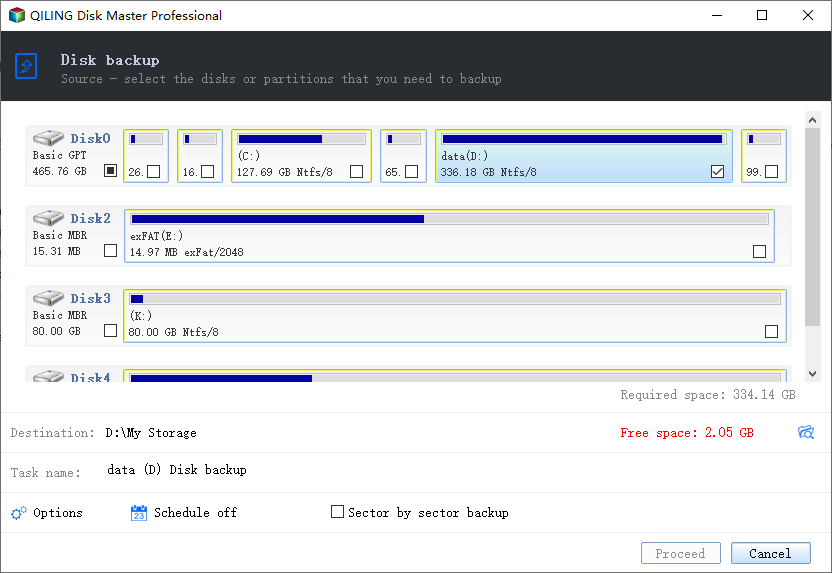
Step 3. Click the browse icon in the "Destination" area to choose a backup location. Here, you can choose any location that is available to you, such as the local hard disk, folders, Network drive, NAS device or Cloud storage, including GoogleDrive, DropBox and OneDrive. You can explore all the connected drive by clicking the + icon in front of each directory.
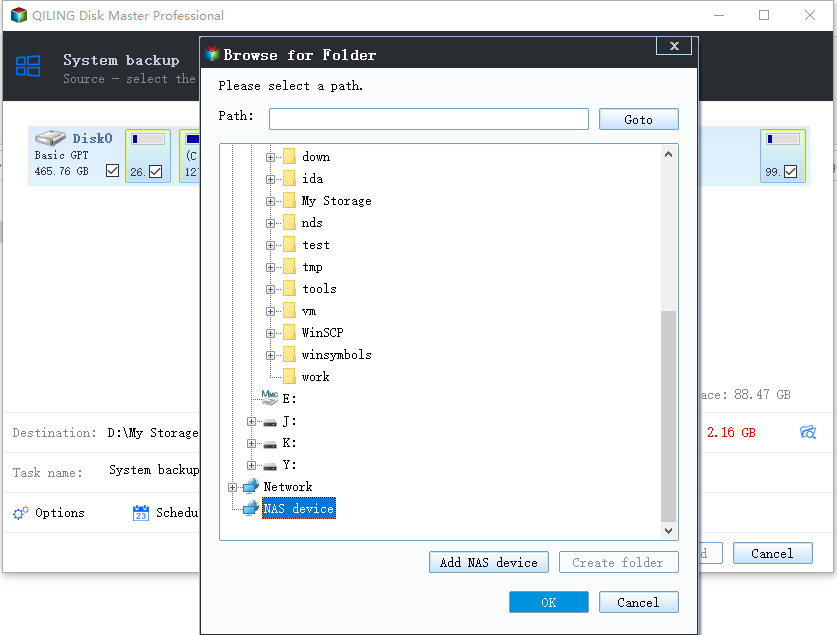
Step 4. Now edit your disk backup image by adding a "Plan name" and "Description" to it.
Do not forget the advanced backup plans in "Options", where you can compress the backup image, encrypt the backup for privacy protection and even enable a sector by sector backup.
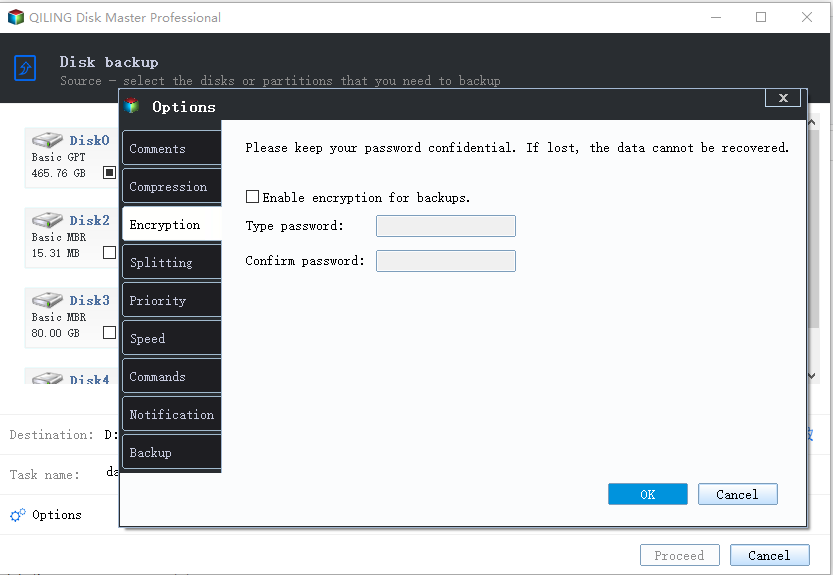
At the same time, you can turn on the "Schedule" in order to create a hard disk/partition backup on a regular basis like daily, weekly, monthly or upon an event according to the schedule set on your own.
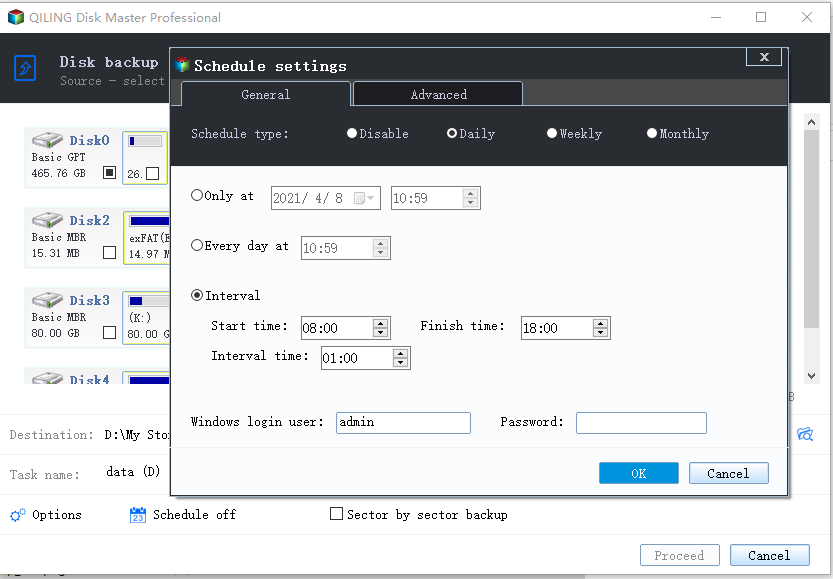
And the "Advanced > Enable image reserve strategy" lets you manage the increasingly growing backup images economically, you can preserve the backups in a setup time or quantity.
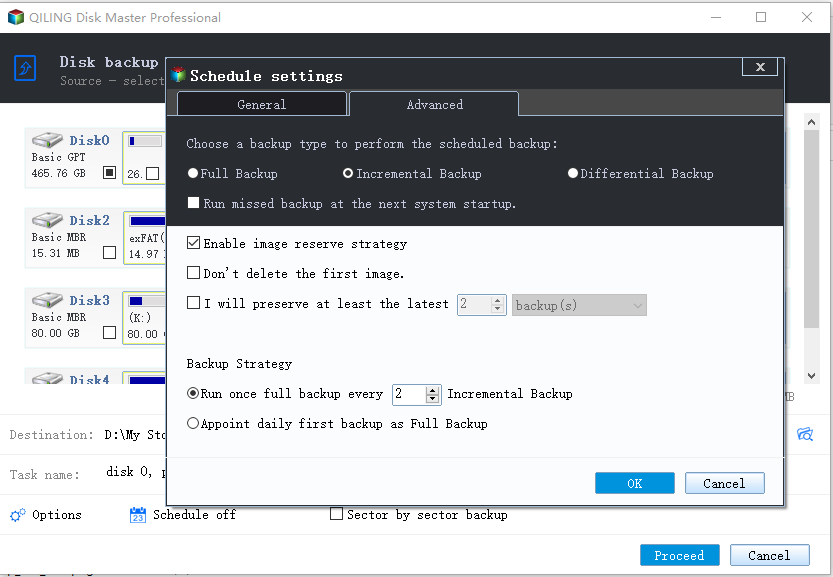
Step 5. Not all the customizable hard disk/partition backup solutions are necessary but try to make full use of the necessary ones. Finally, click "Proceed" to start at once.
For safety, disconnect the physical storage device you used as a backup drive after the backup process is over.
Related Articles
- How to Automatically Backup Files to An External Hard Drive in 3 Ways
- Windows recovery & backup software to recover your files or folders
- How to Clone Encrypted Hard Drive to SSD/HDD
- Download SanDisk Cloning Software to Migrate Data/OS (2021 Update)
- Download Free NAS Backup Software for Windows 10/8.1/8/7
- How to Replace or Upgrade System Drive in Windows 10